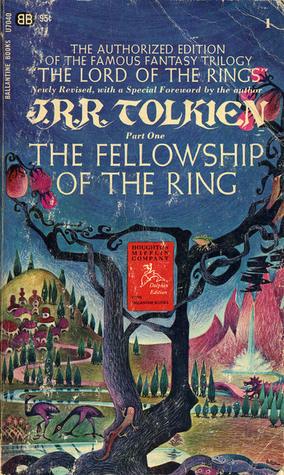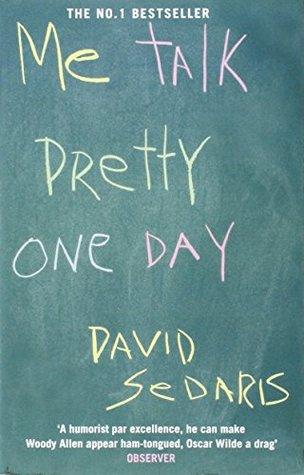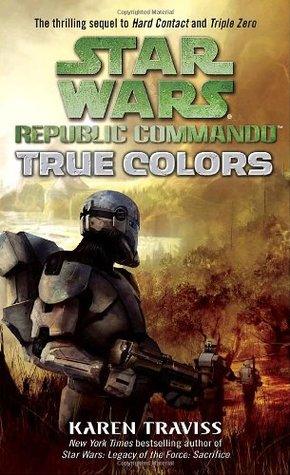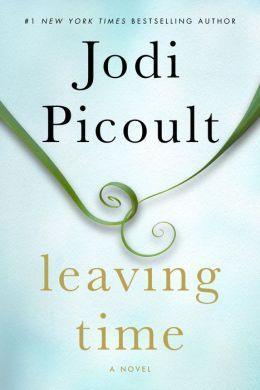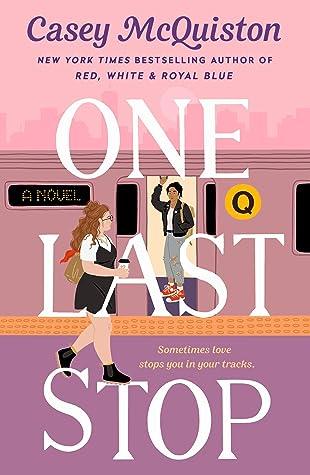The Moon Is Down by John Steinbeck Book Summary
Discover a comprehensive summary and insightful review of John Steinbeck's "The Moon Is Down." Explore key themes, character analysis, and critical insights that unveil the profound messages behind this powerful novel. Perfect for students and literature enthusiasts alike!
The Moon Is Down Book Summary
John Steinbeck's "The Moon Is Down" stands as a powerful wartime novella that explores the psychological dynamics of occupation and resistance during World War II. Written in 1942, this compelling work examines how ordinary citizens respond to foreign invasion, focusing on the human spirit's resilience against oppression rather than graphic battle scenes. Through its portrayal of a small town's struggle against occupying forces, Steinbeck masterfully illustrates the complex relationship between conquerors and the conquered. The novella's enduring relevance lies in its profound insights into resistance movements, making it essential reading for understanding both historical and contemporary conflicts.
Discover detailed insights and a comprehensive review in The Titan's Curse Book Summary, Review & Key Insights to deepen your understanding and enhance your reading experience.
The Moon Is Down by John Steinbeck - Introduction
I had no idea how deeply a short novel could make me rethink the nature of occupation and resistance until I read The Moon Is Down by John Steinbeck. What surprised me most was how Steinbeck doesn’t just show the brutality of war but explores the quiet, almost invisible ways people resist oppression — not with guns, but with courage and everyday acts of defiance. It made me pause and consider how power really works, and how hope can survive even in the darkest times.
I picked up this book initially because I wanted something that wasn’t just another war story filled with battles and strategy, but something more human, more intimate. At only 144 pages, it’s a quick read — about 3-4 hours tops — but it packs a punch that lingers long after you finish.
If you’re someone who loves historical fiction or classics that make you think about the bigger picture, this is definitely for you. It’s perfect if you enjoy stories set during World War II but want something that goes beyond the usual action and dives into the psychology of occupation and resistance. Plus, if you appreciate literary fiction that’s both accessible and profound, this will really resonate.
So, if you’re looking for a book that’s not just a story but a reflection on human resilience and morality, give this one a shot. I promise it’ll make you see history — and maybe even our world today — a little differently.
What is The Moon Is Down About?
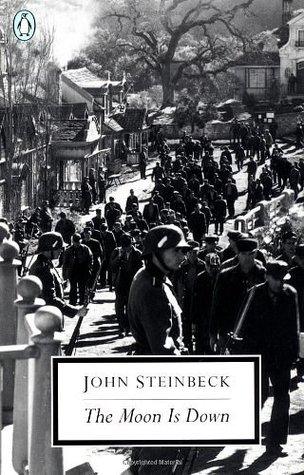
The Moon Is Down by John Steinbeck is a poignant tale of a small town under foreign occupation, illustrating the resilience of the human spirit in the face of tyranny. The book's main message emphasizes the power of resistance and the indomitable nature of freedom, suggesting that oppression can never truly conquer the human will. Key concepts include the psychological effects of war on both the oppressors and the oppressed, the importance of community solidarity in times of crisis, and the moral complexities of collaboration versus resistance.
About Book Author - John Steinbeck
Ladies and gentlemen, it’s my pleasure to introduce our guest today, John Steinbeck, the brilliant mind behind "The Moon Is Down." What's interesting about John Steinbeck is that he didn't start out as a literary giant; rather, he was a struggling writer who drew inspiration from his experiences working on farms and in labor camps. This firsthand knowledge of the human condition is beautifully woven into his narratives.
Beyond "The Moon Is Down," which explores themes of resistance and human dignity, you may also know his other works like "The Grapes of Wrath" and "Of Mice and Men," both of which highlight the struggles of ordinary people. An intriguing personal detail about John is that he once worked as a laborer in the Salinas Valley, which profoundly influenced his writing.
His unique perspective on war and its impact on communities makes him exceptionally qualified to tackle such complex themes. John’s ability to empathize with the human experience allows him to connect with readers on a deeper level.
More Books To Find
The Moon Is Down - Book Overview
It's about a small town in Norway that gets invaded by an oppressive foreign army. The story dives into how the townspeople respond to this occupation, highlighting themes of resilience and the human spirit. Steinbeck crafted this narrative during World War II to show the real impact of war on ordinary lives, not just the battles and politics. He wanted to illustrate how even in the face of tyranny, hope and dignity can persist.
What sets it apart from other war stories is its focus on the psychological and emotional toll of occupation rather than just the heroics of resistance. It’s more about the internal struggles of both the occupiers and the occupied, making it feel very human and relatable.
One specific moment that stuck with me is when a soldier, who initially sees the townspeople as mere subjects to control, starts to understand their humanity. There's a scene where he witnesses the townspeople gathering to support each other, and it really emphasizes how oppression can’t crush the spirit of community. It’s like seeing a flower grow through concrete – it’s a powerful reminder that no matter how bleak things get, there’s always a flicker of hope.
Key Insights of The Moon Is Down
The Moon Is Down by John Steinbeck offers several key insights that resonate with themes of resistance, humanity, and the complexities of war.
1. Power Dynamics: The novel illustrates how oppression can lead to unexpected resistance. The occupying forces believe they can control the town through fear, but the townspeople's spirit remains unbroken, showcasing the resilience of human nature.
2. Human Connections: Steinbeck emphasizes the importance of relationships during times of crisis. The bonds formed between characters highlight the strength found in community and solidarity, which ultimately fuels their desire to resist.
3. The Nature of War: The book portrays war as a dehumanizing force, stripping individuals of their identities. The soldiers and the townspeople both suffer, revealing the shared humanity that exists even among enemies.
4. Moral Ambiguity: Steinbeck explores the complexity of morality in wartime. Characters are faced with difficult choices that challenge their values, illustrating that right and wrong are not always clear-cut in the context of survival.
5. Hope and Resistance: Despite the bleak circumstances, the novel ends on a note of optimism. The idea that hope can persist in the darkest times serves as a powerful reminder of the human spirit's capacity to endure and strive for freedom.
These insights collectively emphasize the enduring themes of resilience, connection, and the moral dilemmas faced in the context of war, making "The Moon Is Down" a poignant exploration of the human condition.
Who Should Read This Book
"The Moon Is Down" by John Steinbeck is essential reading for those interested in themes of resistance, human dignity, and the complexities of war. It appeals to history enthusiasts, particularly those studying World War II, as it explores the impact of occupation on a small town. Readers who appreciate character-driven narratives will find the emotional depth and moral dilemmas compelling. Additionally, it resonates with anyone seeking to understand the resilience of the human spirit in the face of oppression. This book is a poignant reminder of the struggle for freedom and the power of community.
Read If You Are
- interested in themes of resistance and human dignity in the face of oppression
- a fan of classic literature that explores the complexities of war and occupation
- looking for a thought-provoking narrative that delves into the psychology of both oppressors and the oppressed
Skip If You Are
- Not interested in historical fiction or wartime narratives
- Prefer fast-paced plots with action over character development
- Dislike stories that explore themes of resistance and oppression
Important Takeaways from this Book
-
Identify Your Values: Take 10 minutes today to write down your core values. Knowing what you stand for helps guide your decisions and actions, fostering authenticity in your life. Consider what principles resonate most with you—honesty, courage, or community.
-
Practice Empathy: Engage in a conversation with someone you disagree with. Ask them about their perspective and listen actively. This builds understanding and can foster stronger relationships. Approach the conversation with an open mind and a genuine desire to understand.
-
Support Your Community: Volunteer for a local organization or cause that you care about. This strengthens community ties and enhances your sense of belonging. Research local opportunities online or ask around to find a cause that resonates with you.
-
Challenge Oppression: Identify one social issue that concerns you and take a small step to advocate for change. Write a letter to your local representative or share informative content on social media. This empowers you to be a voice for those who may not have one, amplifying awareness and fostering progress.
-
Cultivate Resilience: Start a daily gratitude journal. Each evening, write down three things you are grateful for. This practice helps shift your mindset from negativity to positivity, enhancing your overall well-being. All you need is a notebook and a few minutes of your time each day.
Book Review
I picked up "The Moon Is Down" by John Steinbeck expecting a gripping war story with intense action and drama. What I got was a thoughtful exploration of human resilience and the complexities of occupation.
One of the book's strengths is Steinbeck's writing style. His prose is both lyrical and accessible, making it easy to connect with the characters. For instance, the way he captures the internal struggles of the townspeople as they grapple with their loss of freedom is poignant and relatable. The dialogue feels authentic, and I found myself fully immersed in the lives of characters like the mayor and the soldiers.
However, I felt the pacing was a bit uneven. At times, the philosophical musings slowed the narrative down, which made it challenging to maintain my engagement. I was hoping for more tension and conflict, especially in the latter half of the book, but it leaned more towards introspection than action.
In comparison to other war novels like "All Quiet on the Western Front," which offers a more visceral depiction of battle, "The Moon Is Down" takes a quieter approach. It’s less about the glory of war and more about the human spirit, which I appreciated, but it might not satisfy readers looking for a traditional war narrative.
Overall, I found "The Moon Is Down" to be a thought-provoking read that offers a unique perspective on war and occupation. I would recommend it to those who enjoy character-driven stories and philosophical reflections. However, if you’re seeking fast-paced action, this might not be the book for you.
Final Thoughts
If I'm being honest, finishing The Moon Is Down left me with a mix of admiration and contemplation. Steinbeck's exploration of human resilience and the complexities of war really struck a chord with me. The thing that surprised me most was how he portrayed the invaders not just as villains, but as flawed individuals caught in a larger conflict, which made me rethink the nature of oppression.
I'd definitely recommend this if you're someone who enjoys deep character studies and philosophical reflections on war and power dynamics. However, skip this one if you're looking for a fast-paced action story; it’s more about the emotional and psychological impact than thrilling plot twists.
Months from now, I think the theme of quiet resistance will stick with me, reminding me how even in the darkest times, hope and humanity can prevail. As for a re-read, I’d opt for the full book over just a summary; there’s so much nuance in Steinbeck’s writing that a summary just wouldn’t do it justice.
Overall, my reading experience was thought-provoking, and I found myself reflecting on it long after I turned the last page. It’s one of those books that lingers with you, and I appreciate that about it.
Frequently Asked Questions
How long does it take to read The Moon Is Down?
The Moon Is Down by John Steinbeck has 144 pages. On average, it takes about 4-6 hours to read, depending on your reading speed and comprehension. Enjoy the journey through this thought-provoking novel!
What makes "The Moon Is Down" different from other books in this genre?
The Moon Is Down stands out for its nuanced portrayal of human resilience and moral complexity during wartime. Unlike typical war narratives, Steinbeck emphasizes the psychological impact on both oppressors and the oppressed, fostering empathy and understanding rather than glorifying conflict. This depth makes it uniquely impactful.
Who is the target audience for The Moon Is Down
The target audience for "The Moon Is Down" includes readers interested in themes of war, resistance, and human resilience. It appeals to those who appreciate literary fiction, historical contexts, and the psychological complexities of occupation and collaboration during conflict.
Are there any criticisms or limitations of The Moon Is Down
Critics argue that "The Moon Is Down" oversimplifies complex themes of war and resistance, presenting a somewhat idealized view of human nature. Some readers feel the characters lack depth, and the narrative's pacing can be uneven, detracting from its overall impact and emotional resonance.
What is the main theme of The Moon Is Down by John Steinbeck
The main theme of "The Moon Is Down" is the resilience of the human spirit in the face of oppression. It explores the struggle for freedom, the moral complexities of war, and the power of community and solidarity against tyranny.
Tags:
John Steinbeck, The Moon Is Down, The Moon Is Down Book, The Moon Is Down Book Rating, The Moon Is Down Book Review, The Moon Is Down Book Summary, The Moon Is Down By John Steinbeck, The Moon Is Down Description, The Moon Is Down Short Summary

Michel Fisher
Michel Fisher is a passionate fiction enthusiast and book blogger who writes about emotional reads, character-driven stories, and contemporary romance authors that captivate hearts and minds.

The Moon Is Down
Book Overview
Description
Taken by surprise, a small coastal town is overrun by an invading army with little resistance. The town is important because it is a port that serves a large coal mine. Colonel Lanser, the head of the invading battalion, along with his staff establishes his HQ in the house of the democratically elected and popular Mayor Orden.As the reality of occupation sinks in and the weather turns bleak, with the snows beginning earlier than usual, the "simple, peaceful people" of the town are angry and confused. Colonel Lanser, a veteran of many wars, tries to operate under a veil of civility and law, but in his heart he knows that "there are no peaceful people" amongst those whose freedom has been taken away by force. The veil is soon torn apart when Alexander Morden, an erstwhile alderman and "a free man," is ordered to work in the mine. He strikes out at Captain Loft with a pick axe, but Captain Bentick steps into its path and dies of it. After a summary trial, Morden is executed by a firing squad. This incident catalyzes the people of the town and they settle into "a slow, silent, waiting revenge." Sections of the railroad linking the port with the mine get damaged regularly, the machinery breaks down often, and the dynamo of the electricity generators gets short circuited. Whenever a soldier relaxes his guard, drinks or goes out with a woman, he is killed. Mayor Orden stands by his people, and tries to explain to Col. Lanser that his goal – "to break man’s spirit permanently" – is impossible.The cold weather and the constant fear weighs heavy on the occupying force, many of whom wish the war to end so that they can return home. They realize the futility of the war and that "the flies have conquered the flypaper." Some members of the resistance escape to England and ask the English for explosives so that the townspeople can intensify their efforts. English planes parachute-drop small packages containing dynamite sticks and chocolates all around the town. In a state of panic, the army takes the Mayor and his friend Dr. Winter, the town doctor and historian, hostage and lets it be known that any action from resistance will lead to their execution. Mayor Orden knows that nothing can stop his people and that his death is imminent. He tells his wife that while he can be killed, the idea of Mayor (and freedom and democracy) is beyond the reach of any army. Before his execution, Mayor Orden reminds Dr. Winter of the dialogues of Socrates in the Apology, a part he played in the high school play, and tells him to make sure that the debt is repaid to the army, i.e., that the resistance is continued.
Key Points
Oppression breeds resistance
Characters
Publisher
Penguin Classics
First Publish Date
10/29/42

